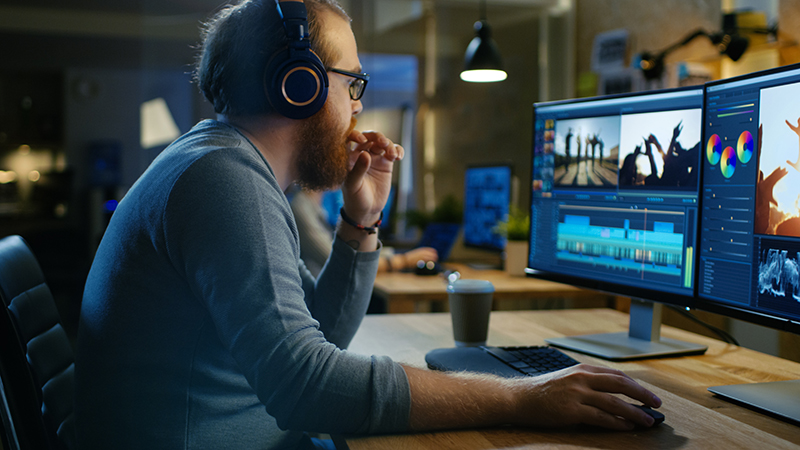Click here to get this post in PDF
When we create a new audiovisual product, music is that support that accompanies your idea and will help you support your narrative, whether to reinforce a feeling, explain an idea or energize a scene.
In this blog, we will give you some tips to make it easier.
Analyze your audiovisual
You have to have an excellent editing script that allows you to know when the synchronization will go (technical term to add music to an audiovisual). If it is an institutional video, these usually have a style of music that is a common thread, but you must know the most important moments of the audiovisual so that it is complemented with the music and the emotional support is adequate. If it is a short or a feature film, you have to know the highest points of emotion in your audiovisual and know exactly the emotion you want to generate.
Discover the intentionality
Once you have analyzed your audiovisual very well, as I said in the last council, you will know what feelings you want to generate. You can divide them into Drama, Action, Comedy, Suspense, Emotional, Love and heartbreak, Multifunction, Institutional, melancholy, Calm, Happiness, Sports and passion.
Do not complicate the rational and emotional
This is a dilemma that people always have when they want to tell a story.
Emotional example: An advertising video about a soda drink, which wants to show freshness but at the same time wants to convey youth, dynamism and be irreverent.
Rational Example: Institutional video of growth in company figures.
Although many times in an audiovisual, the barrier is crossed, and you have to find the best way to give emotion to your figures or seriousness to your emotion.
Musical genre
The musical genres will often make our work much easier, it does not mean that a musical genre can be happy and sad, but each genre has a dynamism that will give its own soul to your audiovisual. A rock song can be used for action scenes, and a pop song can be used for a love scene A jazz song can be used to set the time, an electronic piece can be used to talk about technology and so on. This is not a law, and each genre that I named can set much more than just these ideas.
Instruments
These can also help you a lot since some instruments can generate the right feeling; again, it is not a law, and there are some very versatile instruments such as the guitar or the piano that can generate all kinds of feelings. The instruments can also be only for personal preferences; in our case, we prefer the violins to generate tension or sadness and the ukulele to generate joy for giving some examples.
Trends
It is good that you research trends in music, see how others are doing it and get an idea for your product from those good practices. It will also help you better understand the three past tips, instruments, genres and intentions.
Forget about prejudices
You may have very defined musical tastes, but this does not mean that a style of music that you do not like cannot work in your audiovisual. If you don’t like Rap, that’s fine, but suddenly it is the approach that your audiovisual needs to create an environment; in this case, it is necessary to have an open mind to determine what is best for your audiovisual and not make it personal. Finally, you have to make sure any music you use is legal. In other words, never infringe the copyright on the music you are going to use. That can lead to lawsuits. I advise you to take advantage of the Artlist Discount Code, giving you 2 months to use a wide variety of music for free!
You may also like: 6 Ways Audio-Visual Solutions Can Improve Business Communication
Image source: Shutterstock.com

